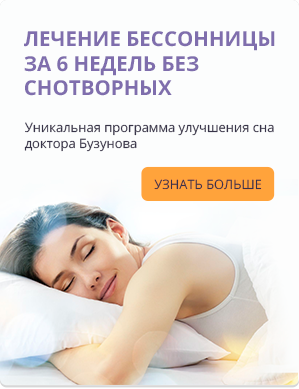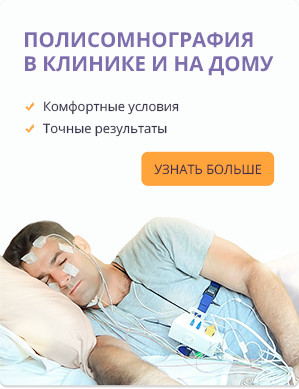Best evidence statement (BESt). Long-term outcomes in obstructive sleep apnea
Guideline Summary NGC-7165
| Guideline Title
Best evidence statement (BESt). Long-term outcomes in obstructive sleep apnea. Bibliographic Source(s)
Guideline Status This is the current release of the guideline. |
||||||||||||||||||||
| Scope
Disease/Condition(s) Obstructive sleep apnea Guideline Category Assessment of Therapeutic Effectiveness Clinical Specialty Family Practice Intended Users Advanced Practice Nurses Guideline Objective(s) To provide best evidence statements for the assessment of long-term outcomes in obstructive sleep apnea Target Population Children (ages 0-18 years) with obstructive sleep apnea (OSA) who have been treated with adenotonsillectomy (T&A) or continuous positive airway pressure (CPAP)/bilevel positive airway pressure (BiPAP) Interventions and Practices Considered 1. Discussion of long-term treatment outcomes with families of children with obstructive sleep apnea 2. Measurement of quality of life, neurocognitive behavior, and clinical parameters 3. Recurrence of sleep disordered breathing Major Outcomes Considered · Changes in quality of life · Changes in neurocognitive behavioral abnormalities · Changes in clinical and laboratory parameters associated with sleep disordered breathing · Rate of change in the above categories · Relapse rate |
||||||||||||||||||||
| Methodology
Methods Used to Collect/Select the Evidence Hand-searches of Published Literature (Primary Sources) Description of Methods Used to Collect/Select the Evidence Search Strategy Original Search · OVID DATABASES · MedLine, CINAHL, Psych Info, Cochrane Database for Systematic Reviews (CDSR) · OVID FILTERS · Publication Date: 1996 to present · Limits: Humans and English Language · Study Type: Highest Quality Evidence · SEARCH TERMS & MeSH TERMS (MedLine & CINAHL) · Patients/Population: · exp Sleep Apnea, Obstructive/ or (OSA or obstructive sleep apnea).mp. · Intervention/Exposure: · exp adenoidectomy/ or exp tonsillectomy/ or (adenotonsillectomy).mp. or exp Continuous Positive Airway Pressure/ or (CPAP or BiPAP or continuous positive airway pressure or positive airway pressure or non-invasive airway pressure).mp. · Comparison outcomes: · not applicable · Outcomes: · long term outcomes (sleeping better, daytime functioning [measured by various instruments, including PedsQL, Michigan, Conner’s etc.], academic performance) Additional Articles · Identified from reference lists, systematic reviews, and clinicians Number of Source Documents 18 Methods Used to Assess the Quality and Strength of the Evidence Expert Consensus Rating Scheme for the Strength of the Evidence Levels of Evidence
*a = good quality study; b = lesser quality study. Methods Used to Analyze the Evidence Review of Published Meta-Analyses Description of the Methods Used to Analyze the Evidence Not stated Methods Used to Formulate the Recommendations Expert Consensus Description of Methods Used to Formulate the Recommendations In determining the strength of a recommendation, the development group makes a considered judgment in a consensus process that incorporates critically appraised evidence, clinical experience, and other dimensions as listed below. 1. Grade of the Body of Evidence (see the «Rating Scheme for the Strength of the Evidence» field) 2. Safety/Harm 3. Health benefit to patient (direct benefit) 4. Burden to patient of adherence to recommendation (cost, hassle, discomfort, pain, motivation, ability to adhere, time) 5. Cost-effectiveness to healthcare system (balance of cost/savings of resources, staff time, and supplies based on published studies or onsite analysis) 6. Directness (the extent to which the body of evidence directly answers the clinical question [population/problem, intervention, comparison, outcome]) 7. Impact on morbidity/mortality or quality of life Rating Scheme for the Strength of the Recommendations Strength of Recommendation
Cost Analysis A formal cost analysis was not performed and published cost analyses were not reviewed. Method of Guideline Validation Internal Peer Review Description of Method of Guideline Validation Reviewed by the Clinical Effectiveness group. |
||||||||||||||||||||
| Recommendations
Major Recommendations Definitions for the strength of the recommendation («strongly recommended», «recommended», and no recommendation made) and levels of evidence (1a-5) are provided at the end of the «Major Recommendations» field. It is strongly recommended, for families of children with obstructive sleep apnea (OSA), that long-term outcomes of treatment with surgery or continuous positive airway pressure be discussed. Quality of Life For children 1 to17 years of age with obstructive sleep apnea, significantly statistical improvement in the following parameters has been measured at least 6 months, and as long as 5 years, after adenotonsillectomy (T&A) or with continuous positive airway pressure (CPAP) treatment: · Sleep disturbance · Physical suffering · Sleep breathing and loudness of snoring · Emotional distress · Excessive daytime sleepiness · Speech and swallowing difficulties · Daytime problems · Caregiver concerns See Appendix 1 in the original guideline document (Constantin et al., 2007 [4a]; Diez-Montiel, 2006 [4a]; Mitchell et al., 2004 [4a]; Flanary, 2003 [4a]; Marcus et al., 2006 [4b]). Note: These improvements were found regardless of instrument or inventory used to measure quality of life (Constantin et al., 2007 [4a]; Diez-Montiel, 2006 [4a]; Mitchell et al., 2004 [4a]; Flanary, 2003 [4a]; Marcus et al., 2006 [4b]). Neurocognitive Behavior For children 2 to 18 years of age with sleep disordered breathing (SDB) and/or obstructive sleep apnea, significantly statistical improvement in the following behavioral abnormalities has been measured at least 6 months, and as long as 18 months, after T&A: · Attention deficit · Daytime sleepiness · Aggression · Somatization · Atypicality · Behavioral symptoms index (BSI) · Depression · Externalizing and internalizing problems · Hyperactivity · Somnolence · Academic difficulties See Appendix 2 in the original guideline document (Ebert & Drake, 2004 [1b]; Chervin et al., 2006 [3a]; Mitchell & Kelly, 2006 [4a]; Friedman et al., 2003 [4b]). Note 1: The significance of the improvement may not be seen until 6 to12 months after surgery but improvement will be maintained at least 18 months (Mitchell & Kelly, 2006 [4a]). Note 2: No studies evaluated long-term neurocognitive behavior outcomes in children after treatment with continuous positive airway pressure or bilevel positive airway pressure (BiPAP). Note 3: First-grade children who demonstrated academic difficulties and presented with Sleep Associated Gas Exchange Abnormalities (SAGEA) had an T&A performed, showed significant improvement in their academic performance during the second grade (Gozal, 1998 [2a]). Clinical Parameters For children 2 to 16 years of age, with continuous positive airway pressure treatment for obstructive sleep apnea or treatment with T&A for any reason, significantly statistical improvement in the following clinical parameters has been measured for at least 6 months, and for as long as 12 months: · Apnea/hypopnea index (AHI) · Weight for height (increase was improvement) · Respiratory parameters · Serum insulin-like growth factor-I (IGF-I) · E/A ratio*, left ventricle (LV) diastolic function · Body mass index (BMI) (increase was improvement) · Serum insulin-like growth factor-binding protein 3 (IGFBP-3) · Mean sleep latency · Arterial oxygen saturation (SaO2) nadir *E/A = a measure of left ventricle diastolic function and is the ratio of the velocity of the early wave occurring during early diastolic filling and the velocity of the second wave occurring during atrial contraction See Appendix 3 in the original guideline document (Gozal, Capdevila, & Kheirandish-Gozal, 2008 [2b]; Chervin et al., 2006 [3a]; Amin et al., 2005 [3b]; Selimoglu, Selimoglu, & Orbak, 2003 [3b]; Nieminen et al., 2002 [3b]; Marcus et al., 2006 [4b]; Stradling et al., 1990 [4b]). Recurrence of SDB 12 months post-surgery with increased risk for elevated blood pressure occurs among a significant subset of children regardless of resolution of SDB at 6-weeks post-surgery (Amin et al., 2008 [3a]). Note: A prospective study of 40 children with SDB treated with T&A, compared with 30 healthy controls, demonstrated that: · 50% of children experienced recurrence of SDB at 12 months regardless of 6-week post-surgery resolution rates. · Obesity, velocity of body mass index increase, and being African American are independent contributors to recurrent SDB at 12 months post-surgery as demonstrated by multivariable logistic regression. · Increased blood pressure compared to pre-surgery levels is associated with recurrent SDB 12 months post-surgery (P = 0.03) (Amin et al., 2008 [3a]). Definitions: Strength of the Recommendation
Levels of Evidence
*a = good quality study; b = lesser quality study. Clinical Algorithm(s) None provided |
||||||||||||||||||||
| Evidence Supporting the Recommendations
References Supporting the Recommendations
Type of Evidence Supporting the Recommendations The type of supporting evidence is specifically stated for each recommendation (see the «Major Recommendations» field). |
||||||||||||||||||||
| Benefits/Harms of Implementing the Guideline Recommendations
Potential Benefits Appropriate post-treatment expectations and follow up for children treated for obstructive sleep apnea Potential Harms Not stated |
||||||||||||||||||||
| Qualifying Statements
Qualifying Statements This Best Evidence Statement addresses only key points of care for the target population; it is not intended to be a comprehensive practice guideline. These recommendations result from review of literature and practices current at the time of their formulation. This Best Evidence Statement does not preclude using care modalities proven efficacious in studies published subsequent to the current revision of this document. This document is not intended to impose standards of care preventing selective variances from the recommendations to meet the specific and unique requirements of individual patients. Adherence to this Statement is voluntary. The clinician in light of the individual circumstances presented by the patient must make the ultimate judgment regarding the priority of any specific procedure. |
||||||||||||||||||||
| Implementation of the Guideline
Description of Implementation Strategy An implementation strategy was not provided. |
||||||||||||||||||||
| Institute of Medicine (IOM) National Healthcare Quality Report Categories
IOM Care Need Getting Better IOM Domain Effectiveness |
||||||||||||||||||||
| Identifying Information and Availability
Bibliographic Source(s)
Adaptation Not applicable: The guideline was not adapted from another source. Date Released 2009 Jan 29 Guideline Developer(s) Cincinnati Children’s Hospital Medical Center — Hospital/Medical Center Source(s) of Funding Cincinnati Children’s Hospital Medical Center Guideline Committee Not stated Composition of Group That Authored the Guideline Group/Team Members: Raouf Amin, MD, Pulmonary Medicine; Dean Beebe, PhD, ABPP-Cn, Behavioral Medicine and Clinical Psychology, Neuropsychology; Barbara Chini, MD, Pulmonary Medicine; Julia Malkin, RN, MSN, CNP, Pulmonary Medicine; Maninder Kalra, MD, MS, Pulmonary Medicine; Hemant Sawnani, MD, Pulmonary Medicine; Narong Simakajornboon, MD, Pulmonary Medicine Clinical Effectiveness Support: Amrita Chima, MBA, Quality Improvement; Eloise Clark, MPH, MBA, Evidence Facilitator; Barbarie Hill, MLS, Pratt Library; Danette Stanko-Lopp, MA, MPH, Epidemiologist; Karen Vonderhaar, MS, RN, Methodologist Ad Hoc Advisor: Paul Willging, MD, Otolaryngology Financial Disclosures/Conflicts of Interest Not stated Guideline Status This is the current release of the guideline. Guideline Availability Electronic copies: Available from the Cincinnati Children’s Hospital Medical Center . Print copies: For information regarding the full-text guideline, print copies, or evidence-based practice support services contact the Children’s Hospital Medical Center Health Policy and Clinical Effectiveness Department at HPCEInfo@chmcc.org. Availability of Companion Documents The following are available: · Judging the strength of a recommendation. Cincinnati (OH): Cincinnati Children’s Hospital Medical Center; 2008 Jan. 1 p. · Grading a body of evidence to answer a clinical question. Cincinnati (OH): Cincinnati Children’s Hospital Medical Center; 1 p. · Table of evidence levels. Cincinnati (OH): Cincinnati Children’s Hospital Medical Center; 2008 Feb 29. 1 p. Print copies: For information regarding the full-text guideline, print copies, or evidence-based practice support services contact the Children’s Hospital Medical Center Health Policy and Clinical Effectiveness Department at HPCEInfo@chmcc.org. Patient Resources None available NGC Status This NGC summary was completed by ECRI Institute on December 29, 2009. Copyright Statement This NGC summary is based on the original full-text guideline, which is subject to the following copyright restrictions: Copies of Cincinnati Children’s Hospital Medical Center (CCHMC) Best Evidence Statement (BESt) are available online and may be distributed by any organization for the global purpose of improving child health outcomes. Examples of approved uses of the BESt include the following: · Copies may be provided to anyone involved in the organization’s process for developing and implementing evidence based care. · Hyperlinks to the CCHMC website may be placed on the organization’s website. · The BESt may be adopted or adapted for use within the organization, provided that CCHMC receives appropriate attribution on all written or electronic documents. · Copies may be provided to patients and the clinicians who manage their care. Notification of CCHMC at HPCEInfo@cchmc.org for any BESt adopted, adapted, implemented or hyperlinked by the organization is appreciated. |
||||||||||||||||||||
| Disclaimer
NGC Disclaimer The National Guideline Clearinghouse™ (NGC) does not develop, produce, approve, or endorse the guidelines represented on this site. All guidelines summarized by NGC and hosted on our site are produced under the auspices of medical specialty societies, relevant professional associations, public or private organizations, other government agencies, health care organizations or plans, and similar entities. Guidelines represented on the NGC Web site are submitted by guideline developers, and are screened solely to determine that they meet the NGC Inclusion Criteria which may be found at http://www.guideline.gov/about/inclusion-criteria.aspx. NGC, AHRQ, and its contractor ECRI Institute make no warranties concerning the content or clinical efficacy or effectiveness of the clinical practice guidelines and related materials represented on this site. Moreover, the views and opinions of developers or authors of guidelines represented on this site do not necessarily state or reflect those of NGC, AHRQ, or its contractor ECRI Institute, and inclusion or hosting of guidelines in NGC may not be used for advertising or commercial endorsement purposes. Readers with questions regarding guideline content are directed to contact the guideline developer. |


